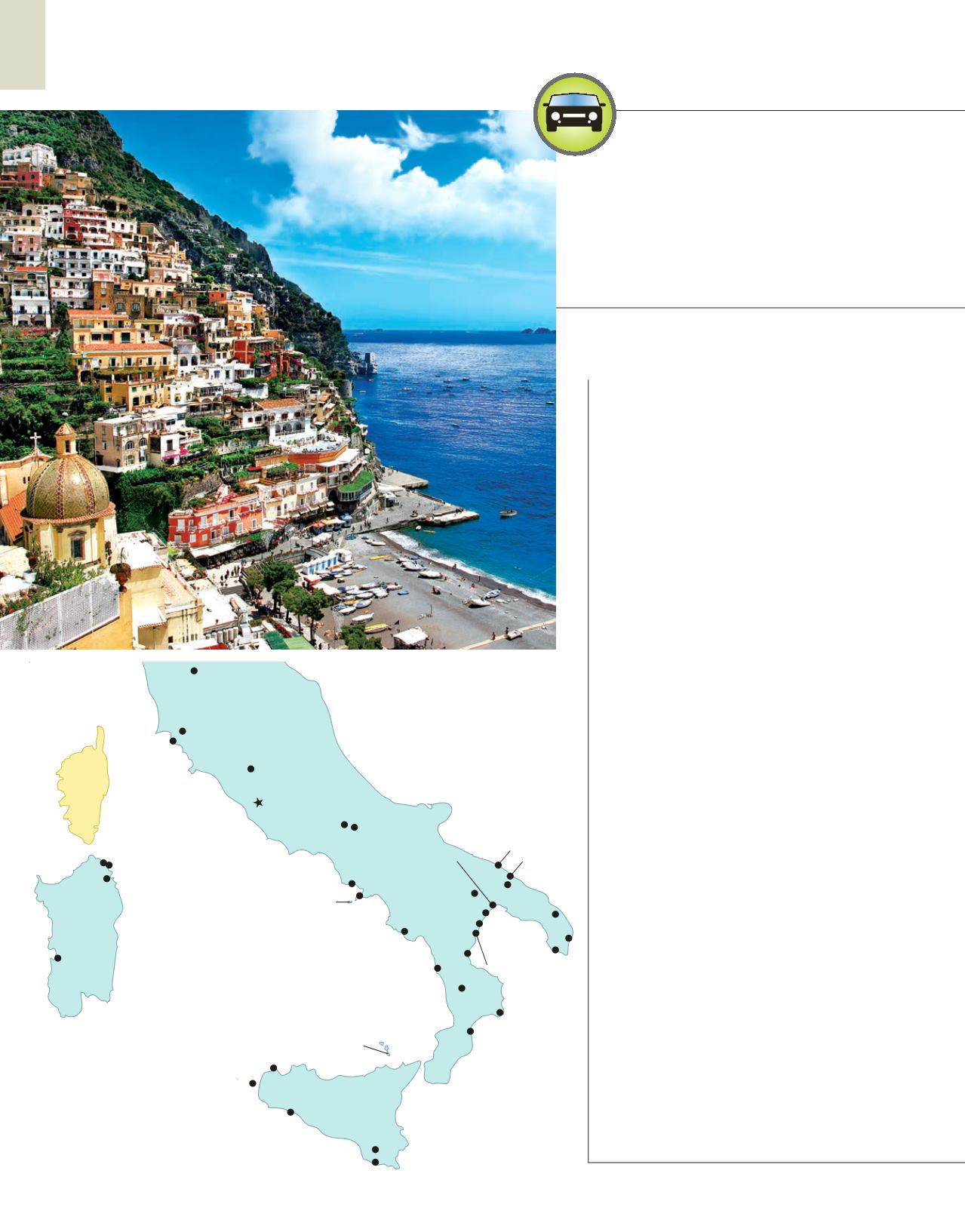

Gavorrano
Soriano nel Cimino
Rocchetta a Volturno Isernia
Rome
Florence
Capri
Sorrento
Naples
Pisciotta
Belvedere Marittimo
Spezzano Piccolo
San Sostene Marina
Isola di Capo Rizzuto
Sibari
Nova Siri Marina
Policoro
Metaponto Lido
Castellaneta
Marina
Alberobello
Lecce
Castro Marina
Lido Marini
Monopoli
Bari
Matera
Punta Ala
Italy
Liscia di
Vacca Porto Cervo
Olbia
Sardinia
Corsica
Arborea
Favignana
San Vito lo Capo
Vulcano
Sciacca
Ragusa
Sampieri
Sicily
330
INTERVAL INTERNATIONAL
IntervalWorld.com
Italy, Other Areas
Naples:
This city 135 miles (218 kilometers) southeast of
Rome offers a grab bag of experiences, from touring
UNESCO World Heritage sites to strolling the labyrinth of
narrow streets in the historic center to descending into
ancient catacombs. And, southward, the ribbon of road
hugging the Amalfi Coast promises show-stopping views.
(1:25 from Isernia)
Spotlight:
Regional Specialties
When it comes to food, there is more than
one Italy. Here, we take a look at the culinary
landscape and offer the chef’s
recommendations.
Bari:
North of Lecce, this city’s streets are
lined with local women hand-making
orecchiette (ear-shaped pasta).
Try:
pasta al forno
, a baked pasta dish.
Capri:
This small island just off the west
coast, and a quick ferry ride from Sorrento,
produces some of the best olive oil in the
country.
Try:
insalata caprese
(a simple salad
consisting of mozzarella, tomatoes, and
basil, pictured right) — the perfect dish in
which to showcase the local olive oil.
Lecce:
This city — located in the heel of
Italy’s boot — is famous for
la cucina povera
(peasant food), which features simple
ingredients that are transformed into
spectacular dishes. It’s no wonder foodies
flock here for cooking courses.
Try: fava beans with chicory and olive oil.
Sardinia:
The lifespan of the residents has
made this island’s cuisine world-famous.
Try: squid and tuna dishes and, if you’re
feeling brave, the
casu marzu
(a cheese that
contains live insect larvae).
Sicily:
Sure, you can get great seafood
here, but Sicily is distinguished by its outside
influences — namely, Arab, African, Greek,
and Spanish.
Try:
couscous al pesce
, which deftly pairs
African starch with local seafood.

















